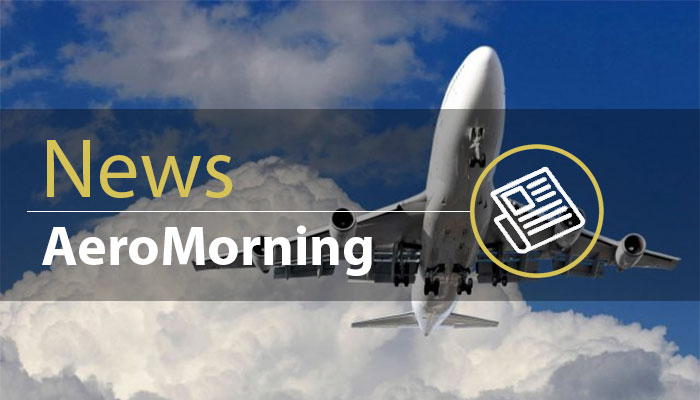LUNA, Europe’s new ‘Moon on Earth’, is set to play a pivotal role in shaping the future of lunar exploration.
The inauguration of LUNA, the lunar analogue facility operated jointly by ESA and the German Aerospace Agency (Deutsche Zentrum für Luft- und Raumfahrt, DLR), took place on 25 September in Cologne, Germany.
The facility, which is designed to recreate the lunar surface, is located next to ESA’s European Astronaut Centre and will be used to prepare astronauts, scientists, engineers and mission experts for living and working on the Moon.
It will facilitate research, development and integrated testing of space technology under realistic conditions, providing valuable insights for upcoming lunar missions, such as NASA’s Artemis programme, which will send astronauts to the Moon for the first time in over 50 years.
ESA Director General Josef Aschbacher said, “The opening of LUNA marks a significant milestone in Europe’s space exploration efforts. This unique facility, with its ability to replicate lunar conditions, advances our understanding of the Moon and prepares us for future missions. We are proud to lead this project, which positions Europe at the forefront of lunar exploration and beyond, while also fostering international collaboration in space research.”
Guests from the space sector and governmental officials attended the inauguration of Europe’s cutting-edge space research facility, including ESA Director General Josef Aschbacher, Chair of the DLR Executive Board Anke Kaysser-Pyzalla, the Minister President of North Rhine-Westphalia Hendrik Wüst, alongside Deputy Minister-President of North Rhine-Westphalia Mona Neubaur and the Federal Government Coordinator for German Aerospace Anna Christmann, as well as representatives of NASA.
“LUNA will contribute to optimising our preparations for activities on the lunar surface through research into technologies and innovation for space exploration. This involves robotics as well as artificial intelligence, the utilisation of local resources and resource-conserving cycles all the way through to regenerative energy systems. LUNA provides a unique array of elements for scientific research and technological development under one roof. In its role as the ‘Moon on Earth’, LUNA will sustainably support activities on the Moon from Germany,” says Anke Kaysser-Pyzalla, Chair of the DLR Executive Board.
“LUNA represents a major leap forward in our efforts to prepare for human exploration of the Moon and beyond. By replicating the lunar surface and providing vital insights into surface operations, this facility will help us address the challenges of future space missions. Partnering with DLR on this project highlights the power of international collaboration and our shared commitment to advancing space exploration together,” commented ESA Director of Human and Robotic Exploration Daniel Neuenschwander.
LUNA features a 700-square-metre area that replicates the Moon’s surface using 900 tonnes of basalt-derived volcanic grains and rocks, processed to create a material known as ‘regolith simulant’, providing a unique testing environment.
A deep floor area will allow for drilling and sampling up to three metres below the surface, enabling research on regolith including frozen lunar soil.
Meanwhile, a Sun simulator mimics the day and night cycles on the Moon, including the challenging lighting conditions found at lunar polar regions.
Advanced control rooms are linked in real-time to mission control centres in Germany and worldwide. In the future, the analogue facility will also be connected to the Lunar Gateway, or even the Moon itself for seamless mission simulations.
Additional features will soon be implemented such as a gravity offloading system to simulate the Moon’s one-sixth of Earth gravity and an adjustable ramp for testing mobility on lunar slopes.
LUNA is designed as an open hub, available to space agencies, academia, researchers, space industry, start-ups and small and medium-sized enterprises from all over the world.
About the European Space Agency
The European Space Agency (ESA) provides Europe’s gateway to space.
ESA is an intergovernmental organisation, created in 1975, with the mission to shape the development of Europe’s space capability and ensure that investment in space delivers benefits to the citizens of Europe and the world.
ESA has 22 Member States: Austria, Belgium, the Czech Republic, Denmark, Estonia, Finland, France, Germany, Greece, Hungary, Ireland, Italy, Luxembourg, the Netherlands, Norway, Poland, Portugal, Romania, Spain, Sweden, Switzerland and the United Kingdom. Latvia, Lithuania, Slovakia and Slovenia are Associate Members.
ESA has established formal cooperation with other four Member States of the EU. Canada takes part in some ESA programmes under a Cooperation Agreement.
By coordinating the financial and intellectual resources of its members, ESA can undertake programmes and activities far beyond the scope of any single European country. It is working in particular with the EU on implementing the Galileo and Copernicus programmes as well as with Eumetsat for the development of meteorological missions.
Source: ESA





Be the first to comment on "ESA-DLR lunar analogue facility inaugurated "